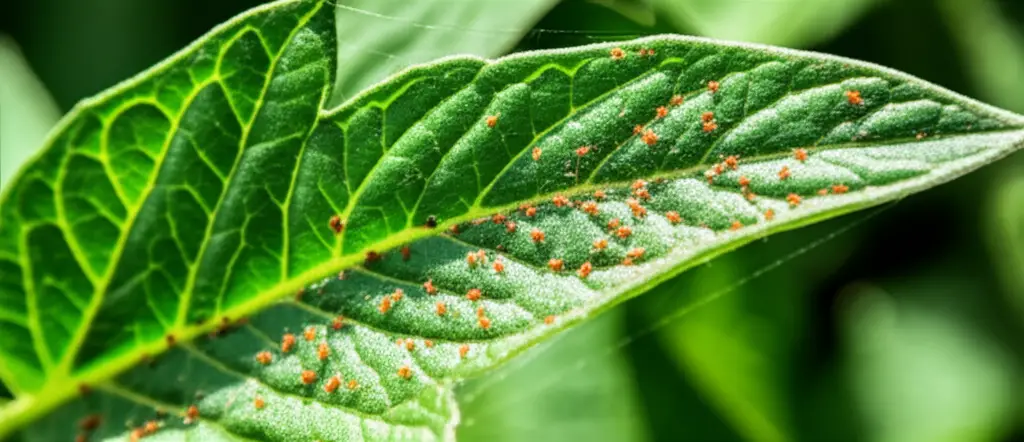
Summary: This comprehensive guide provides everything you need to know about identifying, preventing, and treating spider mites on your tomato plants. Learn how to spot the early signs of infestation, choose the right treatment method, and protect your tomato harvest.
Introduction: The Tiny Terror of Tomato Gardens
Spider mites are a common pest that can wreak havoc on tomato plants, significantly reducing yields and even killing the plant if left unchecked. These tiny arachnids, barely visible to the naked eye, thrive in hot, dry conditions and can multiply rapidly, making early detection and swift action crucial. Understanding their life cycle and recognizing the signs of infestation empowers gardeners to implement effective control measures and safeguard their precious tomato crop.
Identifying Spider Mites on Tomato Plants
Spider mites are minuscule, often appearing as tiny moving dots on the underside of leaves. While they can be various colours, including red, brown, and green, the two-spotted spider mite is a prevalent culprit on tomato plants. Look for these telltale signs:
- Stippling or Speckling: Early infestation presents as small, light-colored dots on the leaves, a result of the mites sucking out the plant’s chlorophyll.
- Fine Webbing: As the infestation progresses, spider mites produce distinctive silk webbing, often covering leaves, stems, and even fruit. This webbing serves as protection and facilitates their movement.
- Leaf Yellowing and Drop: Continued feeding weakens the plant causing leaves to yellow, curl, and eventually drop off.
- Reduced Vigor and Fruit Production: Severe infestations drastically impact the plant’s overall health, leading to stunted growth and significantly diminished fruit production.
Understanding the Spider Mite Life Cycle
Understanding the spider mite life cycle is key to effective control. They progress through various stages: egg, larva, nymph, and adult. The life cycle can be completed in as little as a week under optimal conditions, leading to explosive population growth.
| Life Cycle Stage | Description | Duration (Approximate) |
|---|---|---|
| Egg | Tiny, spherical, and often translucent | 3-5 days |
| Larva | Six-legged and nearly colorless | 1-3 days |
| Nymph | Eight-legged, resembling smaller adults | 2-4 days |
| Adult | Eight-legged, various colors, can reproduce rapidly | 2-4 weeks |
Preventing Spider Mite Infestations
Prevention is always better than cure when it comes to pest control. These preventive measures can significantly reduce the risk of spider mite infestations:
- Regular Monitoring: Inspect your tomato plants regularly, paying close attention to the undersides of leaves, for early signs of mites.
- Water Stress Management: Spider mites thrive in dry conditions. Ensure consistent watering, especially during hot and dry periods, to maintain plant health and deter mites.
- Hose Down Plants: Periodically spraying your tomato plants with a strong stream of water can dislodge mites and disrupt their webbing.
- Encourage Beneficial Insects: Natural predators like ladybugs and lacewings can help control spider mite populations. Creating a welcoming environment for these beneficial insects using companion planting can be helpful. ([Link to article about companion planting])
- Proper Spacing: Adequate spacing between tomato plants promotes good airflow and reduces humidity, making the environment less favorable for spider mites.
Treating Spider Mite Infestations
If you detect spider mites on your tomato plants, several treatment options are available:
- Insecticidal Soap: Insecticidal soap is a readily available and effective treatment against spider mites. Apply it thoroughly to all plant surfaces, focusing on the undersides of leaves. Reapply every few days as needed. ([Link to article about using insecticidal soap])
- Neem Oil: Neem oil is a natural pesticide derived from the neem tree. It disrupts the spider mite life cycle and can be effective in controlling infestations. Follow the product label instructions carefully for application rates and frequency. ([Link to article about using neem oil])
- Miticides: For severe infestations, miticides specifically designed to target spider mites may be necessary. Consult with your local garden center for appropriate miticide recommendations. ([Link to article about miticides])
- Biological Control: Introducing predatory mites, such as Phytoseiulus persimilis, can be a highly effective way to control spider mite populations naturally. These predatory mites feed specifically on spider mites and can significantly reduce or eliminate infestations.
FAQs about Spider Mites on Tomato Plants
- Q: Are spider mites harmful to humans? A: Spider mites are generally not harmful to humans, although some individuals may experience minor skin irritation upon contact.
- Q: Can spider mites infest other plants? A: Yes, spider mites can infest a wide range of plants, including vegetables, fruits, and ornamentals.
- Q: How quickly can spider mites spread? A: Spider mites can spread rapidly, especially under hot, dry conditions, with their life cycle completing in as little as a week.
- Q: Will spider mites go away on their own? A: While environmental factors can sometimes suppress populations, relying on natural decline is not a reliable strategy. Active control measures are essential to prevent significant damage to tomato plants.
- Q: Can I still eat tomatoes from infested plants? A: Tomatoes from lightly infested plants can still be consumed after thorough washing. However, heavily infested plants may produce damaged or deformed fruit, which is best discarded.
Conclusion: Protecting Your Tomato Harvest from Spider Mites
Spider mites can pose a significant threat to your tomato plants, but with the right knowledge and proactive approach, you can effectively manage these tiny pests. Regular monitoring, preventive measures, and prompt treatment are crucial to safeguarding your tomato harvest and ensuring healthy, thriving plants. By incorporating the strategies outlined in this guide, you can enjoy a bountiful tomato crop free from the devastating effects of spider mites.

